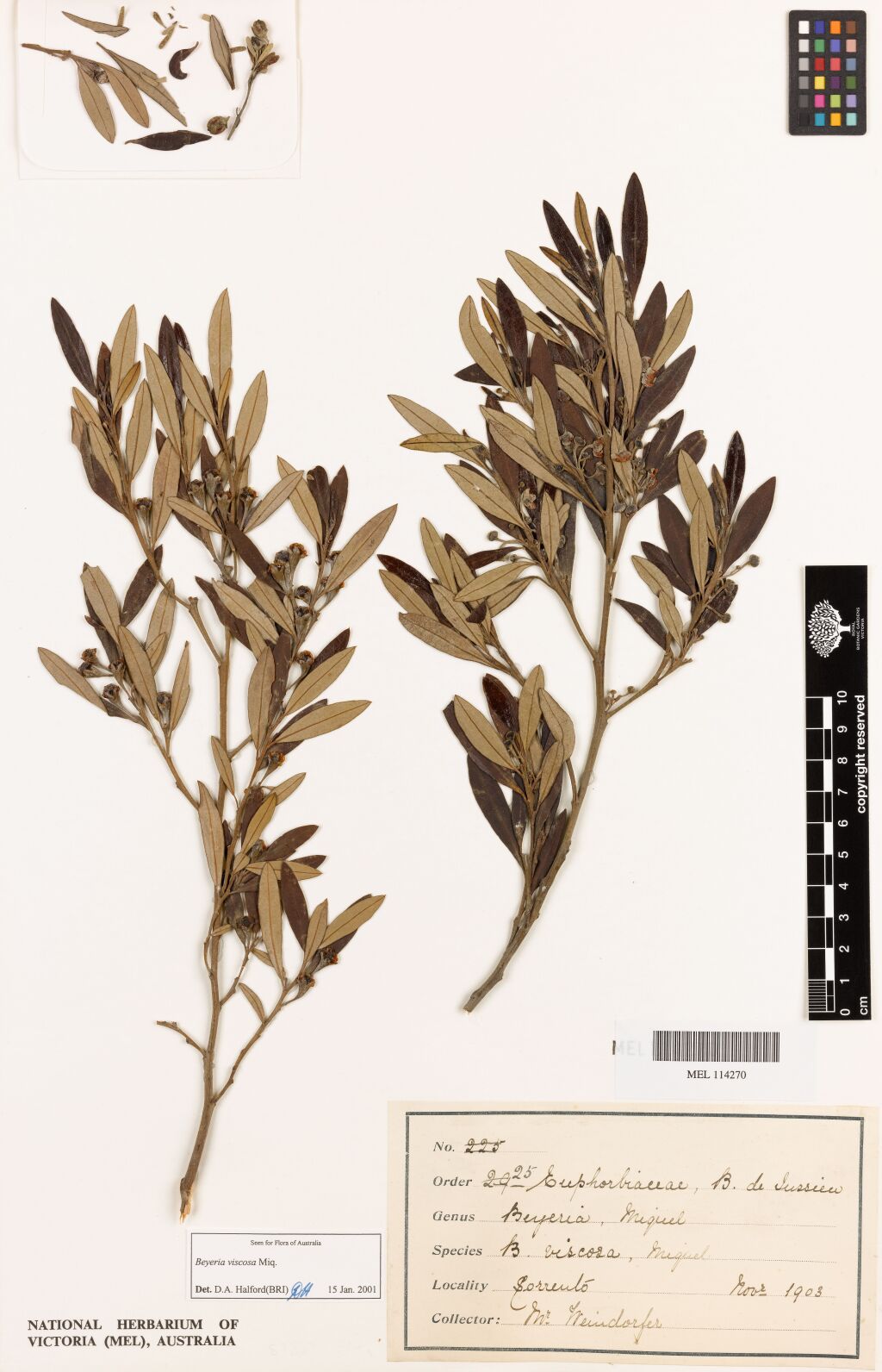Beyeria viscosa
(Labill.) Miq. PinkwoodErect shrub to c. 4 m high. Leaves narrow-elliptic, 20–50 mm long, 5–10 mm wide, acute at apex, margins flat or slightly recurved, glabrous, upper surface dark green, often viscid, lower surface pale green to whitish; petiole 3–6 mm long. Male flowers solitary or up to 5 in a cluster on a viscid peduncle to c. 4 mm long; pedicels 3–10 mm long; bracts oblong, to c. 3 mm long, green; sepals ovate, 2.8–5 mm long, viscid. Female flowers solitary on peduncle to c. 4 mm long; pedicels 5–20 mm long; sepals ovate 2.2–3 mm long, whitish; ovary glabrous, resinous, stigma c. 2 mm wide, sessile, cap-shaped, persistent in fruit. Capsule ovoid to globose, 6–8 mm long, virtually glabrous, viscid; seeds usually 3, obloid, c. 6 mm long, reddish-brown, usually mottled. Flowers mostly Dec.–Feb.
Also WA, NT, Qld, NSW, Tas. Known in Victoria from a single 1903 collection from Sorrento on the Mornington Peninsula, habitat unknown.
The Victorian specimen has leaves at the small end of the range for the species - mostly under 40 mm long and 10 mm wide.
Jeanes, J.A. (1999). Euphorbiaceae. In: Walsh, N.G.; Entwisle, T.J., Flora of Victoria Vol. 4, Cornaceae to Asteraceae, pp. 55–82. Inkata Press, Melbourne.
 Spinning
Spinning


